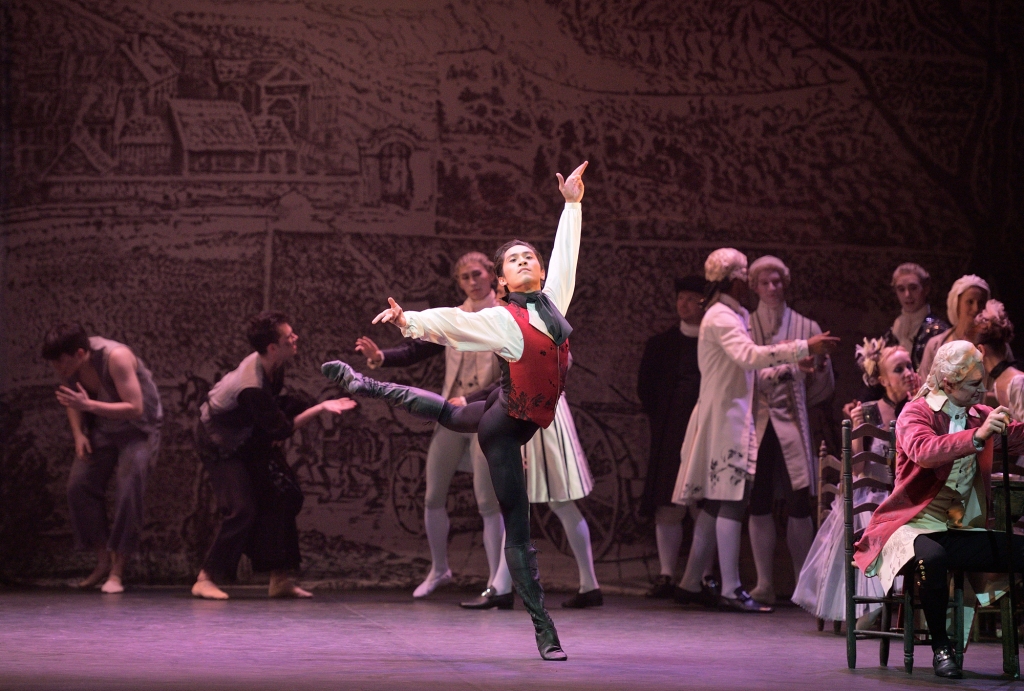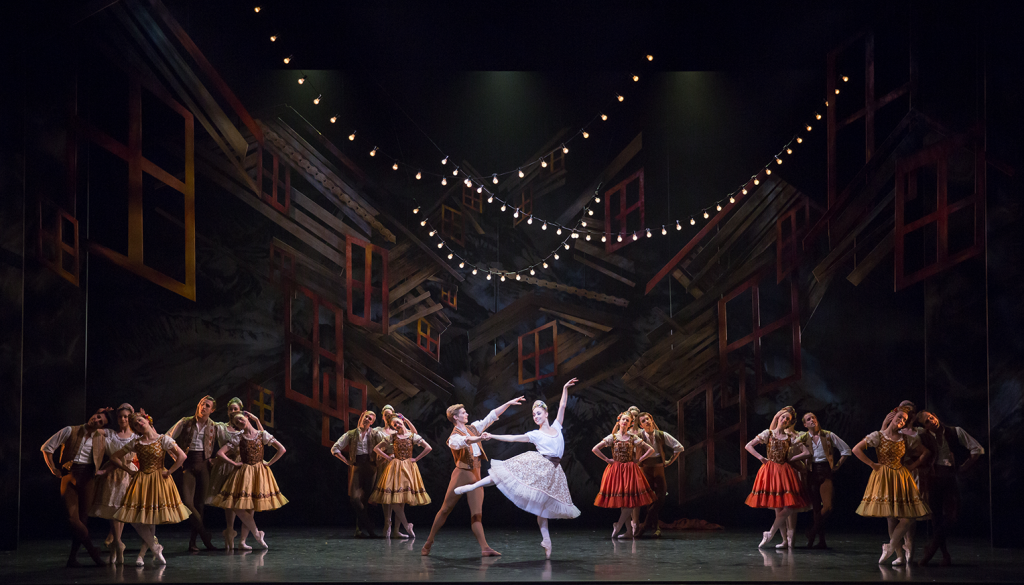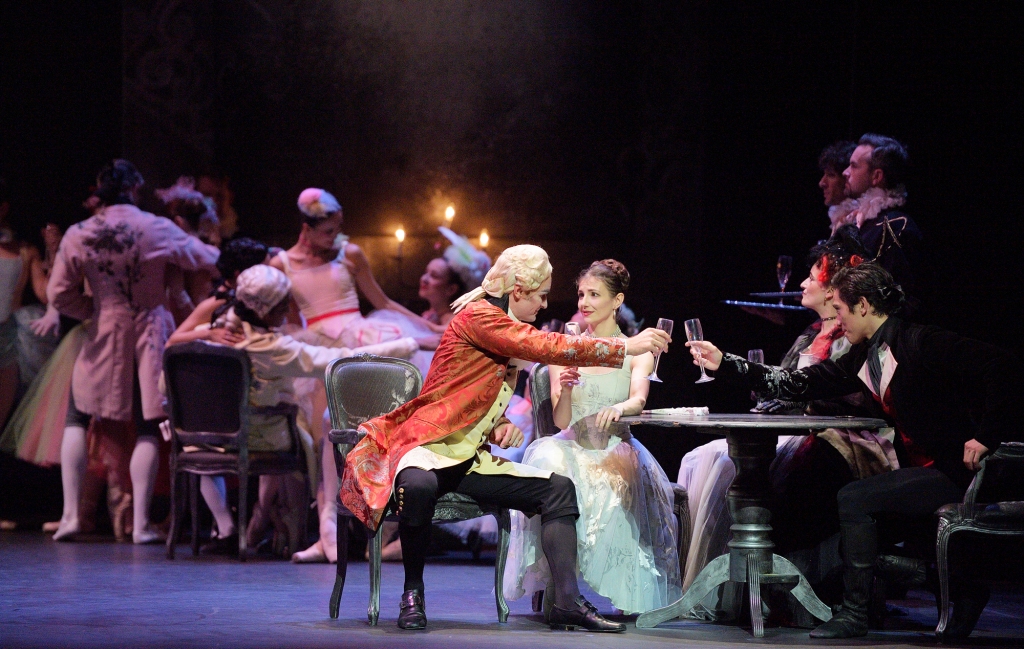MacMillan offerings from English National Ballet and Scottish Ballet, June 2020
Julia and Rosie have been watching some of the ballets being streamed by British ballet companies and have some thoughts on three works by Kenneth MacMillan shown in June: Scottish Ballet’s The Fairy’s Kiss, and English National Ballet’s Song of the Earth and Manon.
There is so much to watch online in lockdown – an overwhelming choice of offerings from companies all over the world. But for our blog we need to focus on British ballet. We notice that there is a cluster of MacMillan ballets available to watch that we are really interested in: we’re not familiar with The Fairy’s Kiss; we love Song of the Earth; and the performance of Manon being streamed is a cast we didn’t get to see live and features Jeffrey Cirio, one of our favourite dancers.

Before watching The Fairy’s Kiss from our respective homes, we discover that it’s quite an early work, from 1960 (MacMillan started choreographing seven years previously, for the Sadler’s Wells Choreographic Group). We wonder whether we will be able to notice any particular MacMillan characteristic features; it seems likely, as he had already made his renowned The Burrow in 1958, and he created his seminal The Invitation later in 1960, so only months after the premiere of The Fairy’s Kiss (originally known by its French title, Le Baiser de la fée). There’s a connection between the three ballets too, in that they all had major roles for MacMillan’s most important muse, the incomparable Lynn Seymour, originator of Juliet, Anastasia and Mary Vetsera, some of his most significant ballerina creations.

So we watch The Fairy’s Kiss and notice how important the establishment of character is through the use of movement style. The three female protagonists are all quite different in their styles, which is crucial to the narrative: the Fairy is a combination of glittering spikiness and sparkling sensuality; the Fiancée is more free flow and buoyant, gentle in her port de bras, while the Gypsy is all voluptuousness with her ample use of the arms and back, and flirtatious in the detail of her footwork. Rosie tells Julia about the webinar she attended when Bethany Kingsley-Garner (who dances the Fiancée) talked about building character through the rehearsal process. She focussed specifically on the role of the Mother, a significant but small role whose past is not explained. Consequently the dancers were encouraged to ask questions about her backstory to give the movements more meaning. This is a clear indication to us that MacMillan thought it vital for his choreography to express situation, narrative, feeling, even for more minor characters.

But we’re a bit perplexed. Wasn’t MacMillan famous for saying that he was sick of fairy tales? The basis of the narrative is The Ice-Maiden written by Hans Christian Andersen in 1861; so perhaps we can think of it more as a work of Romantic literature, with its melancholy tale of forbidden love, shattered dreams, loss and grief. We discover that Andersen claimed “Most of what I have written is a reflection of myself. Every character is from life. I know and have known them all” (qtd. in Silvey, 25). So these concerns in fact seem to be entirely compatible with MacMillan’s choreographic voice. A bit of research uncovers the fact that between 1955 and 1962 MacMillan created a total of four works to the music of Stravinsky: in addition to The Fairy’s Kiss, there was Danses Concertantes (1955), Agon (1958), and most famously The Rite of Spring (1962). We conclude that some important factors drove MacMillan to tackling The Fairy’s Kiss, uncharacteristic though it may seem.

Then we watch Song of the Earth. This is a ballet that we know. We decide we think of it as a “plotless” work, for want of a better term: it doesn’t trace a linear narrative, but neither is it completely abstract. The characters are fascinating; in fact, despite their overtly archetypal nature, the Man, Woman and Messenger seem more real to us than the protagonists from The Fairy’s Kiss. We always enjoy discussing dancers’ individual interpretations of their roles. How does this work with this plotless ballet? For sure, The Messenger of Death requires a dancer with charisma. Julia finds Jeffrey Cirio to be quite menacing in the role: the harbinger of death – the abiding inevitable of life, who can arrive unexpectedly at any moment. Rosie also compares him with Carlos Acosta in the same role. Carlos’ interpretation seemed to be more of a reflection of the original title for the character – Der Ewige, meaning The Eternal One. His presence was portentous, but it felt like a constant companion who would continue to accompany The Man and Woman into the next world. We agree that a role of this complexity and depth is a treasure trove for both the performer and the audience.
As we watch Song of the Earth, we realise that we notice things on a recording that we don’t necessarily take in during a performance. Do we perhaps tend to watch recordings in a more analytical way, because we know we can re-watch the same recording to pick up other aspects we’re interested in? Or maybe because of the choices made in the process of filming and editing? Rosie’s attention is drawn to the partner work for the male dancers in the opening section “The Drinking Song of Earth’s Sorrow”. Julia notices another point about partnering. In the third song (“Of Youth”) the main female dancer of the section is supported in a series of playful cartwheels by four male dancers. Julia makes a connection with a supported cartwheel that is repeated from arabesque to arabesque in an adagio manner in one of the duets for the Fairy and the Young Man in The Fairy’s Kiss. The “Of Youth” cartwheels are also clearly an expression of the lyrics about the surface of the pond showing the world in mirror image, so that everything is standing on its head. We recognise MacMillan as a master in the creation of pas de deux, but seeing these works within such a short space of time makes us more alert to how innovative some of his movement ideas for partnering were, and how imaginatively he reworked them to fit the context of the ballet he was in the process of creating.
Thinking ahead to Manon, we acknowledge that MacMillan created some extraordinary female roles. As well as Manon, our list includes Juliet, Anastasia, Lady Capulet, The Chosen One in The Rite of Spring, the Sisters in Winter Dreams. This list covers almost three decades. But thinking back to The Fairy’s Kiss and Song of the Earth, we remember that the Young Man from The Fairy’s Kiss is involved in multiple pas de deux, and both the Man and The Messenger of Death are protagonists. And on consideration, this development of male choreography is also characteristic of MacMillan’s oeuvre. We think of the male protagonists in Romeo and Juliet and Gloria, and his most developed male role, Crown Prince Rudolf in Mayerling, who has duets with his Wife, and his Mother, as well as with various Mistresses.

As the curtains open on Manon, named after its female protagonist, it is of course her brother Lescaut who sits alone on the stage in a pool of light surrounded by his cloak. Perhaps because it’s his shenanigans that drive the narrative to disaster? He is the first to dance a solo, and his conniving character is conveyed through the steps themselves as well as through mime, meaning that the dancer has to be very skilful technically as well as being a great actor – like David Wall, the originator of the role. This first solo establishes his personality with those tricky entrechats. Of course Jeffrey Cirio is an exceptional actor-dancer and makes for a real wheeler-dealer Lescaut right from the start, articulating the choreography with fantastic finesse. The entrechats are performed with bent legs. We’re unsure about the correct terminology for the movement. We think maybe Italian entrechats, like Italian assemblés. In trying to find an answer we discover Edmund Fairfax’s Eighteenth-Century Ballet. According to this research, the execution of movements with bent legs was quite prevalent in 18th century ballet in comic and what they called “grotesque” styles, by which we believe they meant dancing with lots of acrobatic elements performed by Commedia dell’arte figures, such as Harlequin and Scaramouche. We don’t know whether these particular entrechats were MacMiIlan’s idea, or if he knew the history of the step and connected it to Manon’s 18th century Paris. We consider whether MacMillan saw Lescaut as a kind of Harlequin with his agility, wiliness and high spirits. It may seem fanciful, but it doesn’t seem beyond the realm of the possible.
Looking back, this particular selection of MacMillan ballets highlights the choreographer’s deep concern with creating complex characters, his innovative approaches to partnering, and his gift of superb roles for male as well as female dancers.
References
Fairfax, Edmund. “The Bent-Legged Jumps of Eighteenth-Century Ballet”. Eighteenth-Century Ballet, 16 Feb. 2016, https://eighteenthcenturyballet.com/2019/02/16/bent-legged-jumps-of-eighteenth-century-ballet/. Accessed 25 June 2020.
Kingsley-Garner, Bethany. “The Fairy’s Kiss Post-Show Conversation”. Arts Alive. Webinar, 18 June 2020.
Silvey, Anita, editor. Children’s Books and their Creators. Houghton Mifflin, 1995.